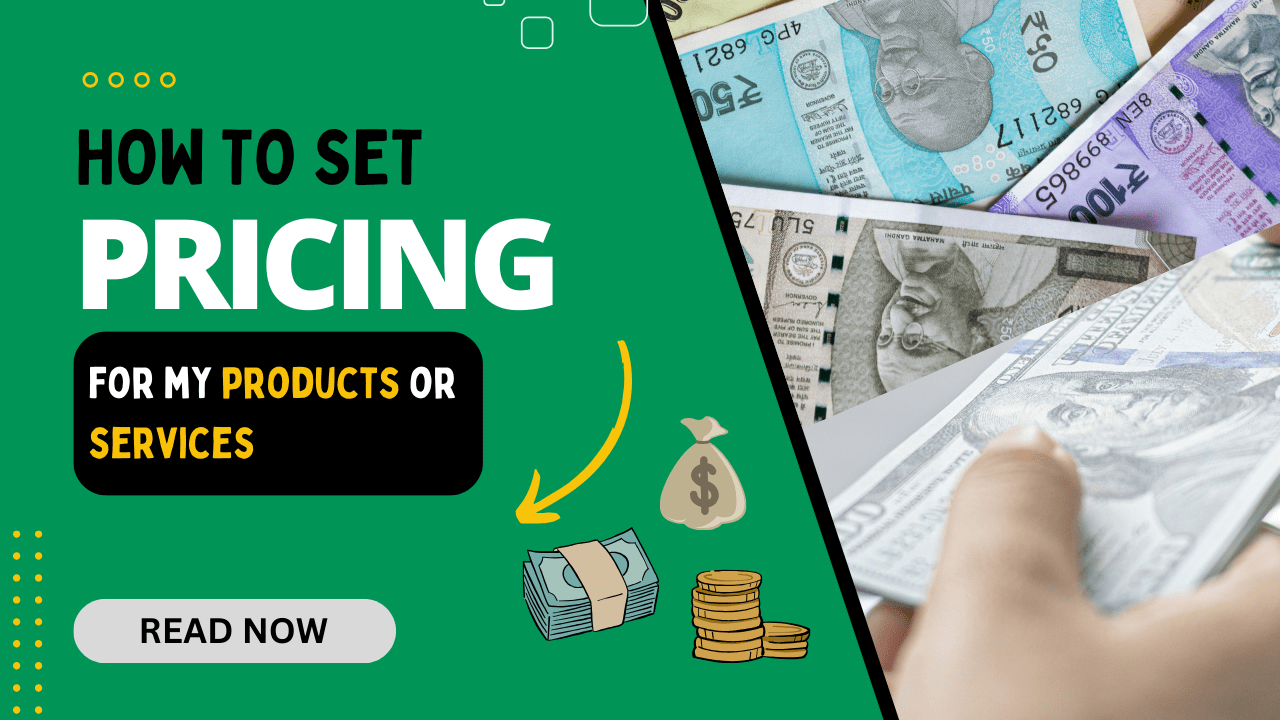Are your sales volumes growing, but you can’t seem to turn a profit? Or maybe you’ve got a great product, but sales just aren’t picking up? It could be a problem with your pricing strategy. Setting the right price for your products or services is crucial for your overall profitability and how your company is perceived in the marketplace. Here’s a step-by-step guide to help you establish a pricing approach that works for your business.
1. Calculate Your Direct Costs
Direct costs include all the expenses directly tied to producing a product or providing a service. These can be broken down into:
- Raw Materials: The cost of the materials needed to make your product, including any duties, freight, or shipping charges.
- Direct Labor: Wages paid to employees who produce the product or deliver the service.
2. Calculate Your Cost of Goods Sold (COGS) or Cost of Sales
The COGS represents the total cost of producing a product or providing a service ready for sale. This includes:
- Raw Material Costs
- Labor Costs
- Amortization Expenses: Depreciation costs for equipment and facilities.
- Factory Overhead: Utilities, supervision, and other costs related to production.
For a wholesaler or distributor, it also includes costs like buying the products from a manufacturer and labor and facility costs to handle and deliver the product.
Formula: COGS=Raw Material Costs+Labor Costs+Amortization Expenses+Factory Overhead\text{COGS} = \text{Raw Material Costs} + \text{Labor Costs} + \text{Amortization Expenses} + \text{Factory Overhead}COGS=Raw Material Costs+Labor Costs+Amortization Expenses+Factory Overhead
3. Calculate Your Break-Even Point
Your break-even point is the amount of sales you need to generate to cover all your expenses and make a profit of $0.
Formula: Break-Even Point=Indirect Fixed CostsGross Margin\text{Break-Even Point} = \frac{\text{Indirect Fixed Costs}}{\text{Gross Margin}}Break-Even Point=Gross MarginIndirect Fixed Costs
Example:
- Revenue: $100,000
- Units Sold: 10,000
- Price per Unit: $10
- Gross Margin: 65%
- Indirect Fixed Costs: $25,000
Break-Even Sales=25,0000.65=$38,461\text{Break-Even Sales} = \frac{25,000}{0.65} = \$38,461Break-Even Sales=0.6525,000=$38,461
4. Determine Your Markup
Markup is the amount added to the cost of goods sold to determine the selling price. It ensures you cover indirect fixed costs while earning a profit.
Example:
- Overhead Costs: $25,000
- Target Operating Profit: $10,000
- Expected Sales Volume: 3,000 units
- Cost of Sales per Unit: $3.50
Step 1: Calculate the current markup per unit: Markup=Price−COGSCOGS×100\text{Markup} = \frac{\text{Price} – \text{COGS}}{\text{COGS}} \times 100Markup=COGSPrice−COGS×100 Markup=6.503.50×100=186%\text{Markup} = \frac{6.50}{3.50} \times 100 = 186\%Markup=3.506.50×100=186%
Step 2: Calculate the new price: New Price=(COGS×Units)+Overhead Costs+Target Operating ProfitAnticipated Volume\text{New Price} = \frac{(\text{COGS} \times \text{Units}) + \text{Overhead Costs} + \text{Target Operating Profit}}{\text{Anticipated Volume}}New Price=Anticipated Volume(COGS×Units)+Overhead Costs+Target Operating Profit New Price=(3.50×3,000)+25,000+10,0003,000=$15.17\text{New Price} = \frac{(3.50 \times 3,000) + 25,000 + 10,000}{3,000} = \$15.17New Price=3,000(3.50×3,000)+25,000+10,000=$15.17
5. Know What the Market Will Bear
Your pricing strategy should consider your competition and market positioning. Decide whether you want to be a high-volume, low-cost provider or a low-volume, high-cost exclusive provider. Adjust your pricing based on your strategic position in the market.
6. Scan the Competition
Understanding your competitors’ pricing is essential. Analyze what they offer and their prices. This helps you set a competitive price or find ways to differentiate your product or service.
7. Revisit Your Prices Regularly
The business environment is constantly changing. Regularly review your costs and prices, especially during annual budget setting. If you raise prices, communicate the reasons to your customers clearly.
Video Explaination to set your price efficiently in businesses
Setting the right price for your products or services involves thorough calculations and market analysis. By following these steps, you can establish a pricing strategy that supports your business goals and meets market demands. Keep testing and adjusting your prices based on customer feedback and market conditions to ensure long-term profitability.
reference: https://www.bdc.ca/en/articles-tools/marketing-sales-export/marketing/steps-setting-right-price-your-products-services


